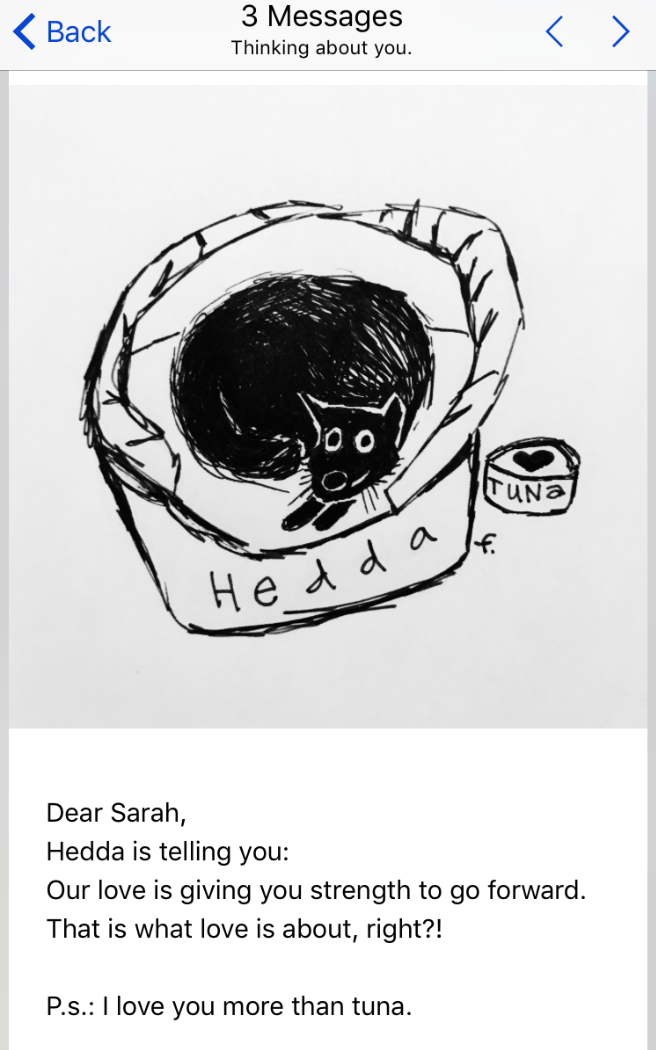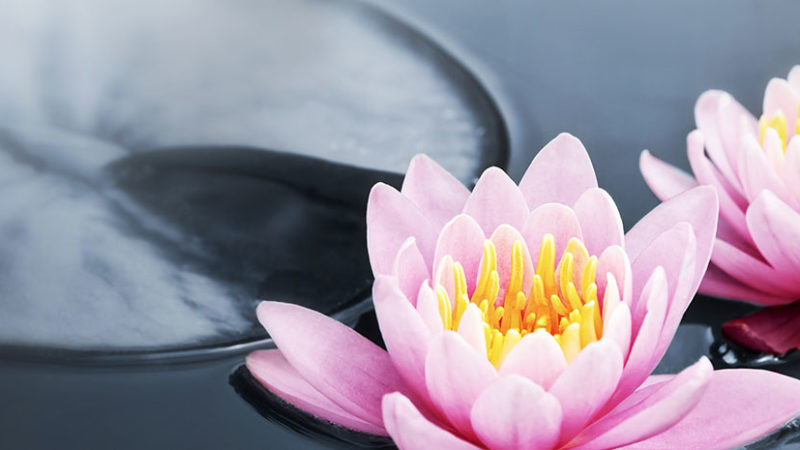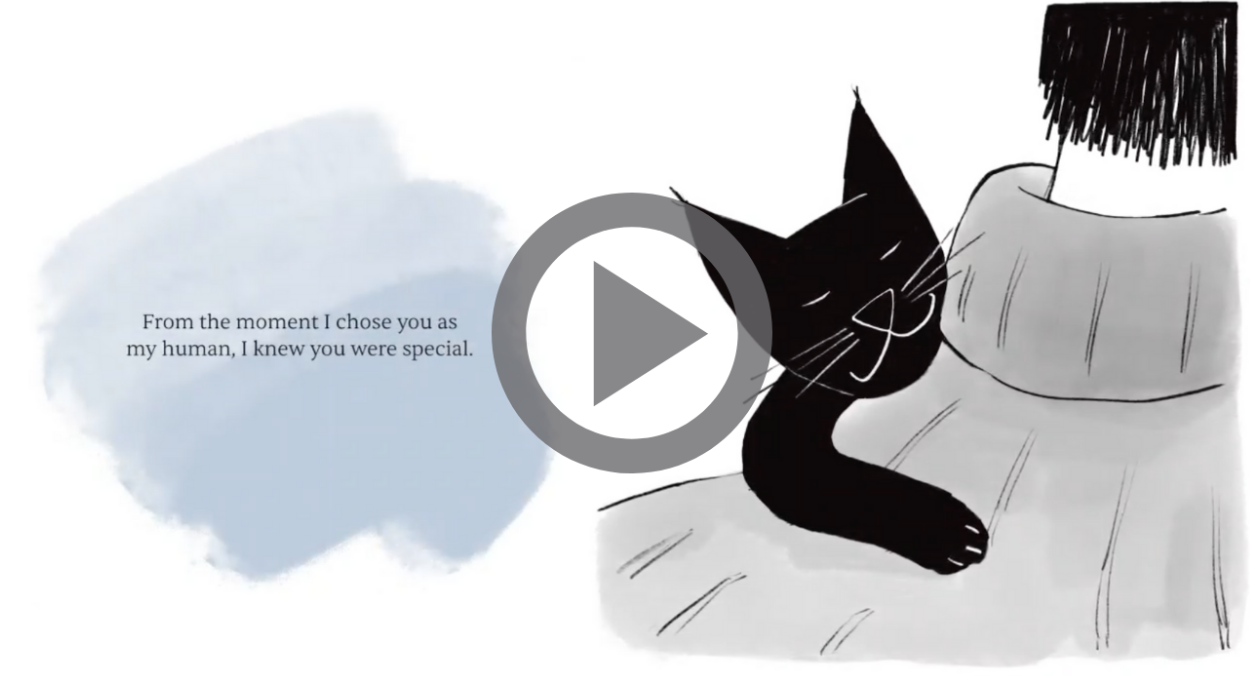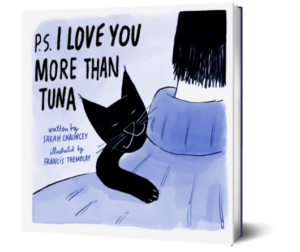The Reality of Co-Creation with Caroline Myss
Co-creation is a reality, but you have to understand what heaven means by reality. It is not a dynamic that serves our personality-it’s a dynamic that serves the soul. And if you were to understand that your soul and your personality generally make two different choices it would be easier to understand the unfolding of the dynamics of your life because they unfold according to the needs of your spirit and not the wants of your personality.
What if you were truly capable of releasing what you want to see happen in your life? Could you do that? Could you live a life where you created a million things and did it anonymously? Because that’s what it means to surrender, and be a partner in co-creation.
The liberation here is that no matter what the gods ask you to do, that ferocious ego that judges what is powerful and what isn’t—what is a big choice, what is a little choice—finally, you’ve silenced that voice. You enter into that profound state of grace that says, “I don’t know why you want me to do this, and quite frankly, I’m at a level of my life where I don’t have to know.” You say to Spirit, “I give you my will. I can’t figure life out anymore. It’s too big a mystery. I’d rather live life than figure it out.” I might suggest this is a better way to go.
– Excerpted from Advanced Energy Anatomy: The Science of Co-Creation and Your Power of Choice, by Caroline Myss

Healing the Trauma that You Don’t Know You Have
Most people living today are more traumatized than they know. But how could that be?
When we experience very distressing events, our nervous system goes into a state of overwhelm (or what neuroscientists call dysregulation). You may end up feeling less like yourself, unable to have a healthy range of experiences, but can’t easily connect the dots mentally or heal emotionally. It’s not your fault that this happens—it’s your nervous system’s built-in way of protecting you, and it happens outside your conscious awareness.
However, you can learn to recognize the effects of trauma. You can follow those threads through the maze of your past, to find ways of healing in the present that will improve your health mentally and emotionally.
Types of Trauma
While individuals differ in their responses, there are broad categories of trauma that we should all know exist: childhood trauma, racial trauma, sexual trauma, religious trauma, narcissistic abuse, war, pandemics and other natural disasters, and intergenerational trauma. Three of these types are briefly covered below.
Childhood Trauma
No family is perfect, but some do active harm. Too often, children suffer neglect and physical, sexual, or emotional abuse, often with no outside resources to protect them. Childhood trauma can also happen if the mother is treated violently, someone in the family has substance abuse problems or a mental illness, the parents are going through a divorce or separation, or one of the parents or a sibling dies.
In all of these situations, because a child’s nervous system is not yet fully developed, the childhood trauma often goes unidentified until something triggers a memory or compounds it, years or decades later.
Narcissistic Abuse
Many of us know someone who exhibits signs of narcissism, focusing exclusively on themselves and unable to empathize with or “make room for” others. If you’ve suffered abuse by a narcissist, whether they were a parent, partner, or boss, you may no longer trust your instincts in relationships or feel guilty about things that aren’t actually your fault or responsibility. You may feel you have to be “special” to gain recognition, and you may have developed a case of perfectionism to keep away the shame that your abuser made you feel for not living up to their impossible standard.
Global Events: Pandemic Trauma and War Trauma
The pandemic put virtually all of us into a “sustained survival mode” that evoked or caused trauma. The pandemic saw a 25 percent increase in anxiety and depression, according to the World Health Organization (WHO). As a shared trauma, it also led to widespread Post-Traumatic Stress Disorder (PTSD) and burnout among health-care workers. It affected parents who had to juggle supervising their children and working from home while schools were closed. And it deeply impacted those who experienced the loss of a loved one unexpectedly to COVID, who were often not able to say goodbye in person, weaving trauma into the fabric of their grief.
The first formally identified cases of PTSD (known as “shell-shock”) were in soldiers who served during World War I. Tragically, wars have been embedded into the human experience since recorded history. No matter whether it be the recent conflict in the Ukraine, the uprising in Iran, or ongoing conflicts elsewhere, the impact on the psyche of those living in those areas is severe. As widespread violence and threats of violence go on, month after month, traumatic stress compounds for both soldiers and civilians living in warzones. Even in areas where conflict is not directly taking place, there can be trauma impressed into those living in ongoing fear of nuclear war or attack.
How Trauma Works in the Nervous System
To understand your trauma, you’ll need to get to know your nervous system and how it responds to signals of danger, real or perceived.
Over the course of human evolution, our nervous system developed three kinds of responses to threats to help us get through dangerous experiences intact. These subsystems are known as: social engagement, sympathetic mobilization, and parasympathetic immobilization systems. They usually operate below our conscious awareness, but when someone experiences ongoing distress or a trauma that doesn’t resolve, the neurological connections behind these responses get strengthened and we become “stuck” in maladaptive patterns—through no fault of our own.
When the social engagement system responds, we look for help or someone to rescue us from the situation. If this response is encouraged, we may habitually “fawn” around others, hoping to appease anyone causing us distress. We can develop too much compassion for others, leading us to forget to care for ourselves, which over time creates more stress and trauma in our nervous system.
When the sympathetic nervous system responds, we engage in “fight, flight, or freeze,” to try to figure out what to do with the threat (freeze), then to subdue it (fight), or else escape it (flight). When this system is “stuck” in overdrive, we may have problems like depression, anxiety, or phobias.
If all other tactics fail, the parasympathetic nervous system can still put us into a collapsed, shut-down state (“faint”), as a way to survive with the least possible amount of damage when fighting or fleeing aren’t possible. This state is linked to depression and dissociation.
Symptoms of Trauma and PTSD
If you’ve sustained any form of trauma in the past, you may experience various difficulties, depending on the way the trauma got stuck in your system:
- Anxiety or Panic Attacks
- Denial
- Feeling emotionally numb or hopeless
- Hypervigilance
- Difficulty connecting with others
- Overwhelming shame or guilt
- Aggressive behavior
- Self-destructive behavior
- Addictions
- Insomnia and dysregulated sleep
- Flashbacks
Another way to determine whether you’ve dealt with trauma is to think about how you show up in a relationship. Do you enjoy some of your interactions with others, or do you often feel inner pressure around everyone you meet? Do you feel nurtured by one or more people in your life, or do you feel responsible to everyone, all the time? Do you feel uncertain around your loved ones, like you’re not really sure you can rely on them?
When we’ve experienced trauma in a past relationship, be it with a neglectful parent, an erratic partner, or an abusive boss, our nervous system tracks the impact, and it affects our present relationships—until we shed light on what’s happened and learn how to work through its effects on us.
Treatments for Trauma
In the last few decades, neurobiology has blossomed and cross-pollinated with psychology. New discoveries have been made, new theories have been tested, and thankfully, a range of therapies and treatments for trauma have been developed to help us cultivate deep self-regulation. Among them are somatic therapies such as Somatic Experiencing and sensorimotor psychotherapy, trauma-focused Cognitive Behavioral Therapy and Cognitive Processing Therapy, Eye Movement Desensitization and Reprocessing (EMDR) and “brainspotting,” and trauma-informed psychodynamic therapy.
Therapy is a wonderful option, but if you’ve been through individual therapy or want additional support, there are other ways to learn skills to work through trauma.
By committing to your own healing, you’ll not only create greater balance in your life, you will stop trauma from being passed on to the next generation—and you’ll bring a healing presence into the world.
If you’d like support in your commitment to healing trauma, you can check out The Healing Trauma Program, hosted by Jeffrey Rutstein, PsyD, CHT.
Vulnerability, Intimacy, and Spiritual Awakening – with Tara Brach
Dear friends, we wanted to share with you this lovely two-part video teaching from our dear friend, Sounds True author, clinical psychologist, and meditation teacher Tara Brach, entitled, ” Vulnerability, Intimacy, and Spiritual Awakening.”
According to Tara, we each live with uncertainty and the fear of rejection and loss, and we each are conditioned to avoid feeling or expressing that vulnerability. Yet intimacy with this unlived life is the gateway to connecting authentically with others, full aliveness and spiritual realization. These videos explore the ways that we defend ourselves, and the pathway to gently, wisely and intelligently disarming and freeing our hearts.
We hope you find these teachings as life-giving as we have, and that they reconnect you with your own innate sense of love, kindness, warmth, and compassion.
Part I – Vulnerability, Intimacy, and Spiritual Awakening
Part II – Vulnerability, Intimacy, and Spiritual Awakening
Guided Meditation: Accepting Your Experience Just as It Is
If you have traveled on the spiritual path even a little way, you have probably come across some version of “love what is”—a reminder that you should accept your experience as it is. However, this teaching easily becomes another injunction. Notice the should in the earlier sentence—it is always a red flag that the judging mind is at work.
The conditioned mind cannot accept unconditionally. It always has an agenda, even if it is well hidden. It secretly bargains and sends the message, “I will accept you [sotto voce] if you change or leave.” This approach is akin to welcoming guests at your front door while secretly hoping they will exit out the back—the sooner, the better! Guests—our unwanted thoughts, feelings, and sensations—will certainly feel this conditional invitation, even if it is unspoken. As a result, they will be much less willing to enter, relax, and reveal themselves. The result? What we resist, persists. So when your new arrivals show up at your door, put away your timer and share some aromatic green tea and a raspberry scone with them. Settle in and let them tell their stories and share their feelings. They just want to be heard and understood. Once they feel genuinely received, they will be open to a new perspective.
Are you willing to be with your experience just as it is, even if it never changes? This is a critically important checking question. Take a few minutes to inquire with the following practice.
MEDITATIVE INQUIRY
Are You Willing to Accept Your Experience Just as It Is?
Sit quietly where you won’t be disturbed, close or lower your eyes, and take a few deep breaths. Feel the weight of your body held by whatever you are sitting on and relax. Feel your attention settling down and in.
Think of a troubling aspect of your conditioning—an unwelcome pattern of behavior, reactive feeling, bodily tension, or invasive thought. Then ask yourself: “Am I willing to accept this just as it is?”
If your response comes from the strategic mind, there will be an honest no. This is good to see. If this is the case, try asking the question a little differently: “Is there something in me that already accepts this just as it is?”
If your attention has settled into the Deep Heart, you will find a yes.
Journey into the depths of your own heart with Dr. John J. Prendergast’s guide, The Deep Heart: Our Portal to Presence.
Being Witnessed In Grief Is A Powerful Balm For Healing
Dear friends,
Two days after my cat, Hedda, died in 2016, my friend Francis sent me a sketch with a note “from” Hedda that read, in part, “P.S. I love you more than tuna.” Through my tears, I thought that would be a great book title. I had a clear vision: an illustrated gift book that people would give to friends, family, colleagues, or clients after the loss of their cat. A step beyond a sympathy card, this would be the first “empathy book” for adults grieving the loss of a cat.

Inspired in part by Eckhart Tolle and Patrick McDonnell’s Guardians of Being and Charles M. Schultz’s Happiness is a Warm Puppy, P.S. I Love You More Than Tuna offers comfort and inspiration through New Yorker-style drawings and simple, evocative language. My goal was to make it heartfelt without being cloying.
Every year, six million Americans and Canadians must say a final goodbye to their cats—buddies who leapt into their hearts as kittens, purred away heartbreak through multiple breakups, snuggled by their side in homes large and small, and occasionally deleted folders of work by stretching out on a warm keyboard.
“Pet loss” is considered a disenfranchised form of grief; it’s not culturally sanctioned. We don’t have any universal rituals for this grief, like sitting shiva or holding a wake. This often leaves the bereaved feeling isolated and misunderstood, which compounds the grief and makes healing more difficult.
People grieving companion animals have a need to be seen, their grief validated. Being witnessed in grief is a powerful balm for healing.
Friends of those grieving companion animals are often at a loss for ways to show their support. P.S. I Love You More Than Tuna gives all of us the opportunity to make a profound impact with a simple gesture.
When Francis sent me the sketch and note, I felt seen. Francis’s gift acknowledged the bond I’d had with Hedda and my grief at her death. The present tense of the note also reminded me that Hedda was still with me, even if I couldn’t see her. That was significant in terms of helping me heal, and that’s the comfort I hope P.S. I Love You More Than Tuna will provide to other cat lovers.
Sounds True has created a lovely video preview for P.S. I Love You More Than Tuna. I hope you’ll check it out below.
Ultimately, I hope this book will benefit the world in multiple ways: for the recipient, witnessing and healing; for the giver, a tangible action they can take to help another; for Best Friends Animal Society, to which I’m donating 10 percent of my proceeds, contributing to their work of keeping pets in the home. This includes helping low-income people connect with resources they need to feed, train, and care for their companion animals. And of course, I hope this will benefit Sounds True and their work in the world, which is quickly becoming more needed than ever.
Take care,
Sarah Chauncey
6 Tips for Empaths to Survive the Holidays

Being in crowds and around energy vampires can be very challenging, almost overwhelming for empaths. During times of stress their ability to be emotional sponges heightens, which overrides their sublime capacity to absorb positive emotions and all that is beautiful. If empaths are around peace and love, their bodies assimilate these and flourish. Crowds or negativity, though, often feel assaultive, exhausting.
For empaths to fully enjoy the holiday gatherings with family and friends, they must learn to protect their sensitivity and find balance. Since I’m an empath, I want to help them cultivate this capacity and be comfortable with it.
I’ve always been hyper-attuned to other people’s moods, good and bad. Before I learned to protect my energy, I felt them lodge in my body. After being in crowds I would leave feeling anxious, depressed, or tired. When I got home, I’d just crawl into bed, yearning for peace and quiet.
Here are six strategies to help you manage empathy more effectively and stay centered without absorbing negative energies.
1. Move away. When possible, distance yourself by at least twenty feet from the suspected source. See if you feel relief. Don’t err on the side of not wanting to offend anyone. At the gathering try not to sit next to the identified energy vampire. Physical closeness increases empathy.
2. Surrender to your breath. If you suspect you are picking up someone else’s energies, concentrate on your breath for a few minutes. This is centering and connects you to your power. In contrast, holding your breath keeps negativity lodged in your body. To purify fear and pain, exhale stress and inhale calm. Picture unwholesome emotions as a gray fog lifting from your body, and wellness as a clear light entering it. This can produce quick results.
3. Practice Guerilla Meditation. Be sure to meditate before the gathering, centering yourself, connecting to spirit, feeling your heart. Get strong. If you counter emotional or physical distress while at an event, act fast and meditate for a few minutes. You can do this by taking refuge in the bathroom or an empty room. If it’s public, close the stall. Meditate there. Calm yourself. Focus on positivity and love. This has saved me many times at social functions where I feel depleted by others.
4. Set healthy limits and boundaries. Control how much time you spend listening to stressful people, and learn to say “no.” Set clear limits and boundaries with people, nicely cutting them off at the pass if they get critical or mean. Remember, “no” is a complete sentence.
5. Visualize protection around you. Research has shown that visualization is a healing mind/body technique. A practical form of protection many people use, including health care practitioners with difficult patients, involves visualizing an envelope of white light around your entire body. Or with extremely toxic people, visualize a fierce black jaguar patrolling and protecting your energy field to keep out intruders.
6. Define and honor your empathic needs. Safeguard your sensitivities. In a calm, collected moment, make a list of your top five most emotionally rattling situations. Then formulate a plan for handling them so you don’t fumble in the moment. Here are some practical examples of what to do in situations that predictably stymie empaths. If your comfort level is three hours max for socializing–even if you adore the people — take your own car or have an alternate transportation plan so you’re not stranded. If someone asks too much of you, politely tell them “no.” It’s not necessary to explain why. As the saying goes, “No is a complete sentence.”
Looking for more great reads?

Adapted from The Empath’s Survival Guide by Dr. Judith Orloff.

Judith Orloff, MD, is the author of The Empath’s Survival Guide (Sounds True, 2017). She is a leading voice in the fields of medicine, psychiatry, and intuitive development.







